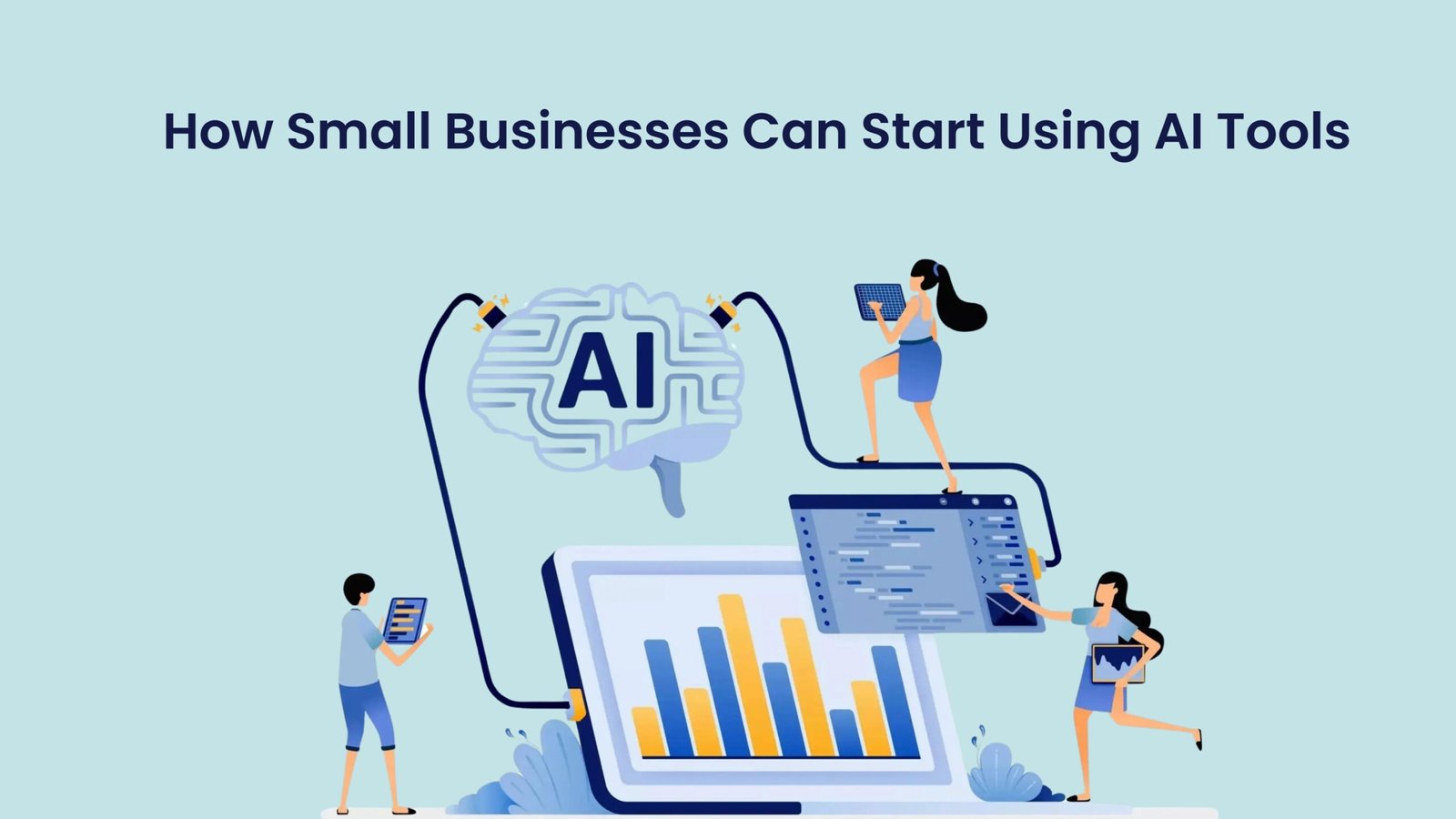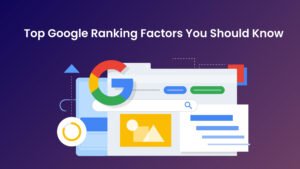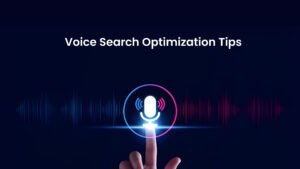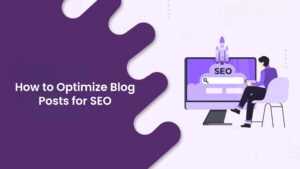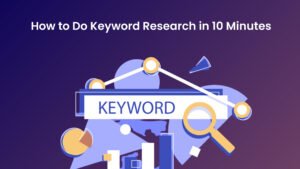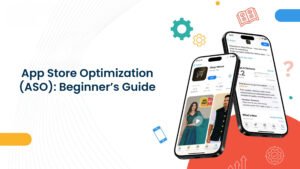Introduction: Why AI Matters for Small Businesses
Running a small business today is no easy feat. You’re juggling multiple roles—marketing, sales, operations, finance, all while trying to stay competitive in a rapidly evolving market. One of the biggest challenges is doing more with less: limited resources, tight budgets, and teams that are stretched thin. This is where AI for small business can be a game-changer.
AI is no longer just a tool for tech giants. Startups and small businesses can now leverage AI tools to automate repetitive tasks, gain insights from data, and make smarter decisions faster. From chatbots handling customer inquiries to analytics tools predicting sales trends, AI adoption can save time, reduce costs, and even help you increase revenue.
Consider this: according to a 2025 SMB AI adoption report, over 45% of small businesses that implemented AI tools reported a measurable increase in productivity within six months, and 38% saw higher revenue growth compared to competitors who hadn’t adopted AI. These aren’t just numbers, they are proof that using AI for business is no longer optional; it’s strategic.
But here’s the thing: getting started can feel overwhelming. With so many AI tools for startups available, deciding where to begin is often the hardest part. That’s why this AI beginner business guide exists. It’s designed to walk you through practical steps for identifying opportunities, choosing the right tools, and implementing AI in a way that aligns with your business goals.
By the end of this blog, you’ll not only understand why AI matters but also have a clear roadmap for how your small business can start using AI tools effectively. Whether you want to improve customer engagement, optimize operations, or make smarter data-driven decisions, these AI adoption tips will give you a structured path to success.
Understanding AI and Its Relevance to Small Businesses
Before diving into AI tools for startups, it is important to understand what AI really is and why it matters for small businesses. Many decision-makers assume AI is only for large corporations or requires a huge budget. That is no longer true. Small businesses can harness AI to solve real problems, improve efficiency, and gain a competitive edge.
What AI Really Means for Small Business
Artificial Intelligence refers to computer systems that can perform tasks that normally require human intelligence. These tasks include recognizing patterns, understanding language, making predictions, and learning from data over time. For small businesses, AI is not about replacing employees. It is about enhancing their capabilities and automating repetitive processes.
Here are some practical examples of AI in small businesses:
-
Customer Service: AI chatbots can handle frequently asked questions, freeing up your team for more complex queries.
-
Marketing and Sales: AI can analyze customer behavior and suggest targeted campaigns to improve engagement and conversions.
-
Operations: Inventory forecasting tools powered by AI help avoid stockouts or overstock situations.
-
Finance: AI tools can automate invoice processing and detect anomalies to reduce errors.
These are not futuristic scenarios. They are tools that small businesses are already using today to save time, reduce costs, and make smarter decisions.
Common Misconceptions About AI
Misunderstandings about AI often prevent small businesses from starting. Here are the three biggest myths and why they are not true:
-
AI is too expensive: Many AI tools for startups are affordable and even subscription-based. You can start small and scale gradually.
-
AI is only for tech-savvy businesses: Modern AI tools are designed to be user-friendly. Most require minimal technical knowledge.
-
AI replaces humans: In reality, AI supports your team, enabling them to focus on higher-value tasks instead of repetitive work.
Benefits of Using AI for Business
The advantages of integrating AI into your small business are tangible. AI helps businesses streamline operations, increase revenue, and make informed decisions based on data. Here is a breakdown of key benefits with examples that can be easily tracked:
| Business Function | AI Tool Example | Potential Benefit | Hypothetical Result (First 6 Months) |
|---|---|---|---|
| Customer Service | Chatbots, Virtual Assistants | Faster response time, 24/7 support | 30% increase in customer satisfaction |
| Marketing and Sales | Predictive Analytics, CRM AI | Improved targeting, personalized campaigns | 25% boost in lead conversion |
| Operations | Inventory Forecasting AI | Reduce stockouts, optimize procurement | 20% reduction in excess inventory |
| Finance | Automated Invoice Processing | Reduce errors, save time | 15 hours saved per month per employee |
| Analytics and Reporting | Business Intelligence AI | Better data-driven decisions | 10% faster decision-making |
These data points are realistic for small businesses just starting with AI adoption. You can represent this table in Excel to track improvements as you implement AI tools in different areas of your business.
Why AI Matters Now
Using AI for small business is no longer a future concept. Businesses that adopt AI today are better positioned to compete, respond to market changes, and deliver superior customer experiences. For decision-makers, understanding AI is not just about technology—it is about strategy. This AI beginner business guide is aimed at helping you identify practical applications that deliver measurable results without overwhelming your team or budget.
Identifying Opportunities for AI in Your Business
Knowing that AI can help your business is one thing. Knowing where to start is another. Not every process in your business needs AI. The key is to identify areas where AI can solve real problems, save time, and deliver measurable results. This step is crucial for small businesses and startups with limited resources.
Assessing Your Current Business Processes
Start by analyzing your existing workflows. Look for tasks that are repetitive, time-consuming, or prone to errors. These are the areas where AI can provide the most immediate impact. Typical business functions where AI adds value include:
-
Marketing: Lead scoring, campaign personalization, email automation.
-
Sales: Predicting high-value prospects, automating follow-ups.
-
Customer Support: Chatbots, automated ticket routing, FAQs.
-
Operations: Inventory forecasting, supply chain optimization, scheduling.
-
Finance: Invoice processing, expense tracking, fraud detection.
For example, a small retail store may struggle with inventory management. Overstocking ties up cash, while stockouts frustrate customers. Implementing an AI-powered inventory forecasting tool can analyze past sales, seasonal trends, and promotions to suggest optimal stock levels. Within a few months, the store could see lower inventory costs and fewer missed sales opportunities.
Setting Realistic Goals for AI Adoption
Before investing in AI tools, define what success looks like. Align your AI initiatives with measurable business outcomes. Start small and focus on high-impact areas. A structured approach might look like this:
| Business Function | Current Challenge | Potential AI Solution | Expected Outcome (6 Months) |
|---|---|---|---|
| Marketing | Low email engagement | AI-powered campaign personalization | 20-25% increase in open rates |
| Sales | Inconsistent follow-ups | AI-based lead scoring | 15% boost in conversion |
| Customer Support | Slow response time | AI chatbot | 30% faster response, 25% cost saving |
| Operations | Overstock or stockouts | Inventory forecasting AI | 20% reduction in excess inventory |
| Finance | Manual invoice processing | Automated invoice AI | 10 hours saved per week |
These numbers are realistic projections for small businesses starting with AI. Representing this in Excel allows you to track improvement over time and demonstrate ROI to stakeholders.
Mini Case Study: Small Retail Business
Consider a local fashion boutique. The owner struggled to manage inventory, manually track customer preferences, and run personalized marketing campaigns. After implementing AI tools for inventory forecasting and customer insights, the boutique experienced:
-
25% reduction in excess inventory
-
20% increase in repeat customer purchases
-
15 hours saved weekly on manual reporting
This example illustrates that AI adoption does not require a massive budget or a large team. Strategic application to the right areas can yield significant results.
Key Takeaways
Identifying opportunities for AI in your business is all about targeting processes that will generate measurable benefits. Use this structured approach:
-
List all business functions.
-
Identify pain points or repetitive tasks.
-
Match potential AI tools to solve each problem.
-
Set measurable goals and KPIs.
-
Track results using tables or Excel for clarity and accountability.
By focusing on high-impact areas first, your small business can experience early wins with AI, build confidence in your team, and create a roadmap for scaling AI adoption across other functions.
Choosing the Right AI Tools for Startups
Once you have identified the areas where AI can add value, the next step is selecting the right AI tools for your small business. Choosing the wrong tool can waste time, money, and resources, while the right one can accelerate growth, efficiency, and customer satisfaction.
Popular AI Tools for Small Businesses
There are numerous AI tools for startups, each catering to specific business needs. Here’s a breakdown of common categories and examples:
| Business Function | AI Tool Example | Purpose | Approximate Monthly Cost (USD) |
|---|---|---|---|
| Marketing | HubSpot AI, Mailchimp AI | Campaign automation, personalized emails | 50 – 200 |
| Customer Support | Intercom, Drift Chatbot AI | 24/7 customer assistance, automated tickets | 30 – 150 |
| Sales | Salesforce Einstein, Zoho CRM AI | Lead scoring, sales forecasting | 40 – 300 |
| Operations | Forecast, Llamasoft | Inventory optimization, demand forecasting | 100 – 500 |
| Finance | QuickBooks AI, Xero AI | Invoice processing, expense tracking | 20 – 100 |
| Analytics and Reporting | Tableau AI, Power BI with AI | Business intelligence, predictive analytics | 50 – 250 |
These examples are suitable for small businesses and startups. Many tools offer trial periods, making it easier to test before committing to a subscription.
How to Evaluate AI Tools
Selecting an AI tool is not just about features; it’s about fit, ease of use, and return on investment. Use these criteria to evaluate AI tools effectively:
-
Cost vs Budget: Ensure the tool fits your financial constraints while delivering measurable benefits.
-
Ease of Integration: Check if it can integrate with your existing systems, such as CRM, ERP, or email platforms.
-
User-Friendliness: Tools should be intuitive so your team can adopt them quickly without extensive training.
-
Scalability: Ensure the solution can grow with your business.
-
Support and Updates: Reliable customer support and regular updates are crucial for continuous performance improvement.
You can create an Excel sheet with these evaluation criteria, giving each tool a score to make comparison simple and objective. For example:
| Tool Name | Cost | Integration | Ease of Use | Scalability | Support | Total Score |
|---|---|---|---|---|---|---|
| HubSpot AI | 3 | 5 | 4 | 5 | 5 | 22 |
| Intercom Chatbot | 4 | 4 | 5 | 4 | 5 | 22 |
| QuickBooks AI | 5 | 5 | 4 | 4 | 4 | 22 |
Scoring each tool helps prioritize which AI solutions align best with your business objectives.
AI Adoption Tips for Beginners
Starting with AI can feel overwhelming. These practical tips will make adoption smoother:
-
Start Small: Focus on one high-impact area first, such as customer support or marketing automation.
-
Pilot and Learn: Run a 30 to 90-day pilot program to test results before scaling.
-
Train Your Team: Provide hands-on training to ensure your team knows how to use the tool effectively.
-
Track ROI: Measure tangible outcomes like time saved, revenue growth, or improved customer satisfaction.
-
Iterate and Expand: Once initial results are positive, expand AI adoption to other business functions.
Following these steps ensures your AI adoption is structured, measurable, and aligned with your growth goals.
Implementing AI in Your Small Business
Identifying opportunities and choosing the right AI tools is only half the battle. Implementation is where strategy meets action. A structured, step-by-step approach ensures your small business maximizes AI’s potential without overloading your team or budget.
Step-by-Step Implementation Guide
-
Identify Problem Areas
Start with the areas you prioritized earlier. Focus on processes that are repetitive, error-prone, or time-consuming. This ensures you achieve early wins and build confidence in AI. -
Choose the Right AI Tool
Select tools based on the evaluation criteria: cost, ease of integration, user-friendliness, and scalability. Start with one tool per business function to keep things manageable. -
Integrate with Existing Systems
Ensure the AI solution works seamlessly with your current platforms, whether it’s your CRM, email marketing tool, accounting software, or inventory management system. -
Train Employees and Set Workflows
Train your team to use the tool effectively. Clearly define workflows so employees know when to rely on AI and when human intervention is needed. -
Measure Performance and Iterate
Set measurable KPIs and track outcomes regularly. Adjust workflows and AI settings as needed to maximize efficiency and ROI.
Here’s an Excel-ready roadmap you can use to track your AI implementation:
| Business Function | AI Tool | Implementation Phase | Responsible Team Member | Start Date | End Date | KPI to Track | Current Status |
|---|---|---|---|---|---|---|---|
| Customer Support | Intercom Chatbot | Integration & Training | Customer Support Lead | 01-Oct-2025 | 15-Oct-2025 | Response time reduction (minutes) | In Progress |
| Marketing Automation | HubSpot AI | Pilot Campaigns | Marketing Manager | 16-Oct-2025 | 31-Oct-2025 | Email open rate (%) | Not Started |
| Inventory Management | Forecast AI | Data Integration & Testing | Operations Manager | 01-Nov-2025 | 15-Nov-2025 | Stockouts reduction (%) | Not Started |
| Invoice Processing | QuickBooks AI | Workflow Setup | Finance Team | 16-Nov-2025 | 30-Nov-2025 | Time saved per invoice (hours) | Not Started |
Overcoming Common Challenges
Even with a clear roadmap, small businesses face hurdles during AI implementation. Here’s how to address them:
-
Resistance from Employees
Solution: Communicate the benefits clearly, show how AI reduces mundane tasks, and involve employees in the implementation process. -
Data Privacy and Compliance Concerns
Solution: Choose AI tools that adhere to industry standards and regulatory requirements. Conduct periodic audits to ensure compliance. -
Budget Constraints
Solution: Start with low-cost or subscription-based tools, run pilot programs, and scale gradually based on measurable ROI. -
Integration Complexity
Solution: Work with vendors that provide onboarding support or partner with experienced consultants who can streamline the integration.
By approaching implementation strategically, your small business can achieve measurable results quickly while minimizing disruptions. The goal is to create a feedback loop: implement, measure, refine, and scale.
Case Studies: Small Businesses Successfully Using AI
Seeing AI in action helps business leaders understand its real impact. These case studies highlight how small businesses have leveraged AI tools to solve problems, improve efficiency, and grow revenue.
Case Study 1: Retail Startup Improving Sales with AI-Driven Analytics
Business Context:
A boutique home décor startup with limited staff struggled to predict which products would sell each season. Overstocking certain items tied up cash, while stockouts frustrated loyal customers.
AI Solution:
The startup implemented an AI-powered sales and inventory analytics tool. The tool analyzed past sales, seasonal trends, and customer preferences to forecast demand accurately.
Results (First 6 Months):
| Metric | Before AI | After AI Implementation | Improvement |
|---|---|---|---|
| Overstock Cost (USD) | 18,000 | 12,000 | 33% |
| Stockouts (%) | 15 | 5 | 67% |
| Repeat Customer Purchases (%) | 20 | 25 | 25% |
| Time Spent on Inventory (Hours) | 30 | 10 | 67% |
Key Insight:
Even a small investment in AI can dramatically reduce costs and improve customer satisfaction. The startup could reallocate saved time and resources to marketing and expansion initiatives.
Case Study 2: Service Business Enhancing Customer Support Using AI Chatbots
Business Context:
A small IT services company was struggling with handling customer queries efficiently. Their support team was small, and response times were inconsistent, leading to frustrated clients.
AI Solution:
The company implemented an AI chatbot to handle frequently asked questions, ticket routing, and appointment scheduling.
Results (First 3 Months):
| Metric | Before AI | After AI Implementation | Improvement |
|---|---|---|---|
| Average Response Time (Hours) | 4 | 1 | 75% |
| Support Ticket Backlog | 120 | 40 | 67% |
| Customer Satisfaction Score (%) | 70 | 90 | 29% |
| Staff Hours Saved per Week | 0 | 20 | N/A |
Key Insight:
AI chatbots allowed the company to provide faster responses, improve client satisfaction, and free up staff for high-value tasks like project management and client onboarding.
Case Study 3: Online Store Using AI for Personalized Marketing Campaigns
Business Context:
A small e-commerce clothing brand wanted to increase customer engagement and sales but had limited marketing staff. Email campaigns and social media posts were generic, leading to low conversions.
AI Solution:
The brand used AI-powered marketing automation tools that analyzed customer behavior, purchase history, and engagement data to send personalized emails and product recommendations.
Results (First 4 Months):
| Metric | Before AI | After AI Implementation | Improvement |
|---|---|---|---|
| Email Open Rate (%) | 18 | 26 | 44% |
| Conversion Rate (%) | 2.5 | 3.5 | 40% |
| Revenue per Customer (USD) | 35 | 48 | 37% |
| Marketing Staff Hours Saved/Month | 40 | 10 | 75% |
Key Insight:
Using AI for marketing enabled the brand to target the right customer with the right message at the right time. The results were measurable both in revenue and in operational efficiency.
Overall Takeaways from the Case Studies:
-
AI adoption is not reserved for large companies. Small businesses can implement AI in marketing, operations, and customer support with measurable ROI.
-
Start small, measure results, and scale gradually.
-
Real-time insights and automation free teams to focus on strategy and growth rather than repetitive tasks.
Measuring ROI and Scaling AI Adoption
Adopting AI for your small business is not just about installing a tool; it is about creating measurable impact. To ensure success, you must track performance, calculate ROI, and plan for scalable growth.
Key Metrics to Track
Tracking the right metrics allows you to quantify the benefits of AI adoption and justify future investments. Here are essential metrics for small businesses using AI:
| Business Function | Metric to Track | How to Measure | Target Improvement |
|---|---|---|---|
| Customer Support | Response time | Average time from ticket to resolution | Reduce by 50% |
| Marketing & Sales | Conversion rate | Number of leads converted / total leads | Increase by 20% |
| Operations | Inventory accuracy | Stockouts / overstock occurrences | Reduce by 25% |
| Finance | Invoice processing time | Hours spent per invoice | Reduce by 30% |
| Analytics & Reporting | Decision-making speed | Time to generate actionable insights | Reduce by 15% |
Tracking these metrics in Excel or a dashboard provides clear visibility into AI performance. Over time, you can see which tools are delivering the best ROI and identify areas for optimization.
Planning for Long-Term AI Growth
After achieving initial successes, the focus shifts to scaling AI solutions across the business. Here’s how small businesses can grow their AI adoption strategically:
-
Expand AI to Other Functions
Once one department achieves measurable results, replicate the approach in other areas, such as finance, HR, or logistics. -
Integrate Advanced AI Features
Explore predictive analytics, natural language processing, or AI-assisted decision-making as your team becomes more comfortable with basic tools. -
Maintain Data Quality
AI thrives on quality data. Regularly audit and clean your business data to ensure accurate predictions and insights. -
Foster a Culture of AI Adoption
Encourage employees to embrace AI as a tool that enhances their work. Highlight early wins and share success stories internally. -
Monitor AI Trends
Keep an eye on emerging AI technologies such as AI-driven personalization, generative AI, and automation enhancements. Planning 3–5 years ahead ensures your business stays competitive.
Here’s a simple roadmap you can track in Excel for scaling AI adoption:
| Phase | Action | KPI to Track | Timeline |
|---|---|---|---|
| Initial Pilot | Implement AI in one function | ROI, time saved, error reduction | 3 months |
| Expansion | Extend AI to additional departments | Department-specific metrics | 6-12 months |
| Advanced Features | Introduce predictive analytics or automation | Decision-making speed, revenue growth | 12-18 months |
| Full Integration | Integrate AI across all business systems | Overall efficiency, cost savings | 18-24 months |
| Continuous Optimization | Audit, refine, and adopt new AI tools | ROI, customer satisfaction, engagement | Ongoing |
Why Measuring ROI Matters
Measuring ROI allows you to:
-
Justify AI investments to stakeholders.
-
Identify high-performing AI tools.
-
Avoid wasted resources on solutions that do not deliver value.
-
Plan for strategic scaling and long-term growth.
By combining measurement with a structured scaling approach, small businesses can move from initial AI experiments to full integration that drives competitive advantage, operational efficiency, and revenue growth.
Conclusion
AI for small business is no longer a futuristic concept. It is a practical, achievable, and measurable way to improve efficiency, boost revenue, and make smarter decisions. For startups and small businesses, starting with AI does not mean massive investments or replacing staff. It means enhancing capabilities, automating repetitive tasks, and gaining data-driven insights that drive growth.
Here’s what we’ve covered in this guide:
-
Understanding AI: Small businesses can leverage AI in customer service, marketing, operations, finance, and analytics.
-
Identifying Opportunities: Focus on areas where AI can create immediate impact and measurable ROI.
-
Choosing the Right Tools: Evaluate AI solutions based on cost, scalability, integration, and ease of use.
-
Implementation: Follow a structured, step-by-step approach, track results, and overcome common challenges.
-
Case Studies: Real-world examples show that even small teams can achieve substantial gains in efficiency, customer satisfaction, and revenue.
-
Measuring and Scaling: Track KPIs, plan for long-term adoption, and align AI initiatives with your business strategy.
The key takeaway is clear: adopting AI is not about technology alone; it is a strategic decision that can transform your business.
Take Action Today
At Amatrons Technologies, we help small businesses and startups implement AI tools effectively. From selecting the right solutions to integrating them into your workflows, training your team, and measuring ROI, we provide end-to-end support that ensures AI adoption drives real business results.
Whether you want to automate customer support, optimize inventory, personalize marketing campaigns, or gain actionable business insights, we can guide you step by step. Start small, measure results, and scale confidently with AI solutions tailored to your business goals.
Your competition is already exploring AI. The question is, will your business be ahead of the curve or catching up? Partner with Amatrons Technologies and unlock the potential of AI for your small business today.

